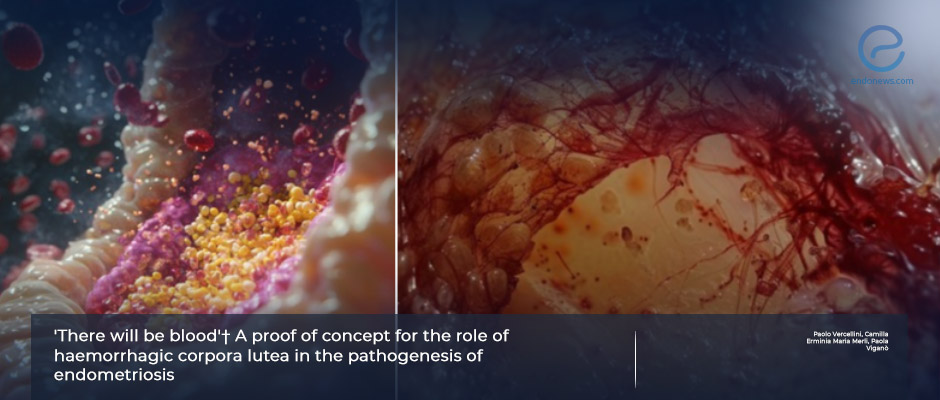A new pathogenetic hypothesis of endometriosis
Aug 21, 2024
Corpus luteum bleeding could be the reason for the origin of deep endometriosis and endometriomas.
Key Points
Importance:
- This hypothesis arose from a 2024 study by the Chaggar-Jurcovich group that noted the presence of 13 of 15 premenopausal women with spontaneous hemoperitoneum who were diagnosed with deep endometriosis, all having hemorrhagic corpus luteum.
Highlights:
- Superficial endometriosis would be an early "micro-hemorrhagic" form of endometriosis consistent with retrograde flow theory.
- In contrast, the bleeding from the corpus luteum causes hemoperitoneum which can be named "macro-hemorrhagic" form and results in deep endometriosis.
What's done here:
- Dr. Vercellini's group from Milan, Italy, penned this article, asserting a new hypothesis for causing deep endometriosis.
Basic Outlines:
- The hypothesis is mainly based on the fact that "bleeding" is a characteristic of endometriosis.
-
Research indicates that bleeding from hemorrhagic corpora lutea leading to hematoperitoneum is a key factor in developing deep endometriosis.
-
Women with excessive menstrual bleeding are more prone to endometriosis due to impaired fibrinolysis.
-
Higher urokinase plasminogen activator levels in endometriosis increase the hemorrhagic potential of ectopic endometrial fragments, explaining superficial peritoneal endometriosis formation.
-
Superficial lesions can cause excessive bleeding and hemorrhagic corpus luteum. Thus, superficial peritoneal endometriosis represents an early micro-hemorrhagic stage, while deep lesions and endometriomas may be more advanced, macro-hemorrhagic stages due to corpus luteum bleeding.
Lay Summary
The authors asked the mysterious question, "Why is there such a high incidence of hemorrhagic corpora lutea in women who develop deep endometriosis later?" to clarify their views on that hypothesis. They also tried to answer the question," Does ovarian bleeding cause endometrioma, or does endometriosis cause ovarian bleeding?"
The central tenet of the hypothesis is that endometriosis begins with micro-hemorrhages that evolve into macro-hemorrhagic processes, ultimately leading to deep endometriosis. This pathogenic hypothesis is based on limited evidence and is largely speculative. It is criticized for not adequately explaining the onset of the disease in many patients and for being overly simplistic.
The authors concluded that the report by Chaggar and colleagues that informs the retrograde flow theory alone is unlikely to fully explain endometriosis pathogenesis. They suggest that this new hypothesis could provide valuable insights and call for more comprehensive studies by independent research groups to validate it.
Research Source: https://pubmed.ncbi.nlm.nih.gov/38905004/
hemorrhagic corpus luteum pathophysiology spontaneous hemoperitoneum endometrioma fibrinolytic activity deep endometriosis.

